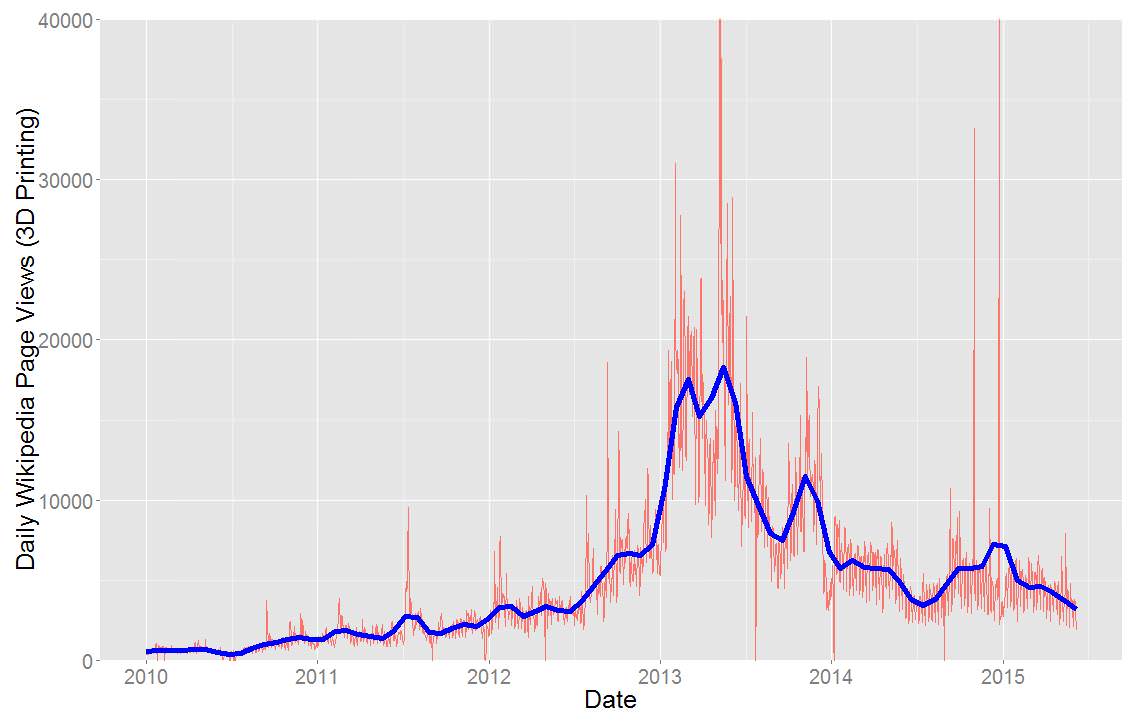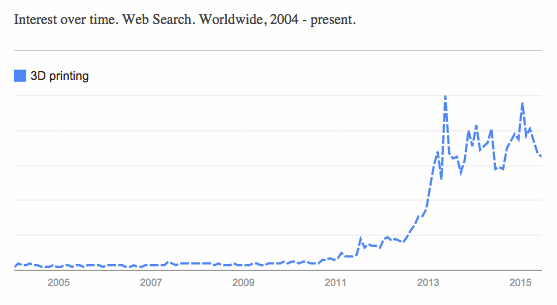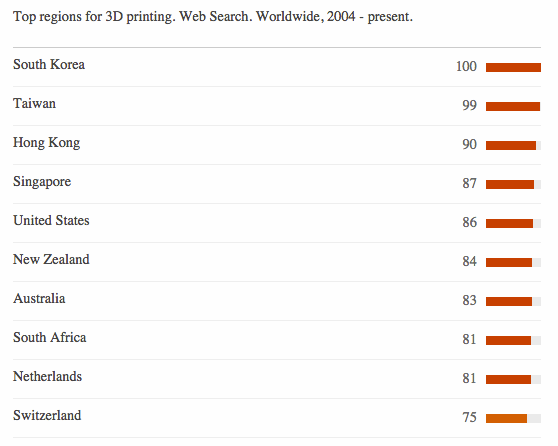Statistics show that daily Wikipedia pageviews for the “3D Printing” page reached their peak in 2013. Does this mean interest is waning?
Lately, there seems to some doom and gloom about the future prospects for 3D printing. Fast Company published a gushing piece about the rise of Desktop Milling Machines, whilst simultaneously gloating about the waning fortunes of MakerBot. “Printers like MakerBot’s Replicator suddenly seem better suited for party tricks,” runs the theme.
Elsewhere, TIME magazine ran a lengthy essay called “Was 3D Printing Just a Passing Fad?” Based on the lacklustre performance of their stock prices, the article observes, the major industry players are having a tough year.
The chart at the top of this article might seem to correlate with these negative sentiments. Based on data taken from Wikipedia, it can be clearly seen that daily pageviews (in 1000s) for the “3D printing” entry peaked in 2013, with a steady decline bringing us right up to the present day. Is 3D printing really as doomed as it looks?
Wikipedia Pageviews Up Close

For those of us at the coalface of the 3D printing industry, we have a different perspective on things.
The data illustrates the first peak in a typical hype cycle, when many people first heard about 3D printing, were justifiably curious, and then checked for an explanation on Wikipedia.
But just because the Wikipedia pageviews dropped off after 2013, it doesn’t prove that we’ve lost interest in the technology. It’s more the case that, as understanding of 3D printing went mainstream, we haven’t needed to rely so heavily on Wikipedia to explain what it was.
Supporting evidence for our theory is Google Trends. Enter the search term “3D Printing”, and we see the same dramatic upward spike around 2013, but there has been no equivalent drop off in interest. In fact, the ongoing search volume indicates that the interest has become permanent, and is forecast to remain steady for the foreseeable future.

Another interesting nugget of data from Google Trends, which also has some bearing on the Wikipedia pageviews downturn, is the breakdown of regional interest. South Korea, Taiwan, Hong Kong and Singapore occupy the top slots for search activity worldwide. The only English language country in the top five is the United States.

This is relevant because the entry on 3D printing on Wikipedia, the one with the plummeting pageviews, is in English language. For those countries where English is not the primary language, if they’d used Wikipedia at all to research the topic, they’re more likely to have visited alternative Wikipedia pages in their local language. For example, here’s the Wikipedia entry for 3D printing in Korean.
Based on these charts, is it arguable that 3D printing is not in the dire straits that mainstream media are predicting. Now that the initial hype is out of the way, the industry can concentrate on incremental gains that are grounded in reality, like faster print times, and the ability of 3D printers to use different colours, finishes and materials.
The growth will continue with the expiration of key patents that allow for dozens of small companies to start producing cheap desktop 3D printers for consumers. These in turn have benefits for ordinary folks exploring the potential of digital fabrication. Looking at ongoing developments like 3D printed prosthesis; or 3D printed food; or the opening of FabLabs all over the world; there are reasons to be cheerful.
License: The text of "Wikipedia Pageviews for 3D Printing Peaked in 2013" by All3DP is licensed under a Creative Commons Attribution 4.0 International License.